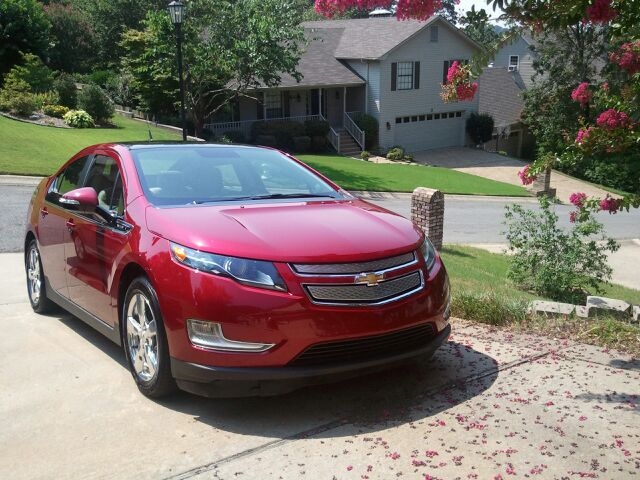A few weeks ago we told you about a 2011 Chevrolet Volt which had caught fire in a storage yard three weeks after it was subjected to an official National Highway Traffic Safety Administration crash test.
But after a second Chevrolet Volt caught fire at the NHTSA test labs last week following a test designed to recreate the circumstances of the first, General Motors has announced it will be writing to every Volt owner in the next few days to offer them the chance to swap their Volt for another GM vehicle until formal investigations have been concluded.
Loan cars offered
The announcement came as part of a conference call today with Mark Reuss, president of GM North America, and Mary Barra, Senior Vice President of global product development to discuss the recently opened NHTSA formal investigations into battery fires in wrecked Volts.
Reuss was keen to point out that GM’s decision to offer a temporary swap to any concerned owner is a voluntary, proactive one, not because GM has received a single request from an owner for such a program -- “It hasn’t,” he confirmed.
In fact, to date, there hasn’t even been a single Chevrolet Volt outside of the NHTSA crash-test facility which has caught fire following an accident.
During the conference call, Reuss and Barra also outlined some of the facts surrounding both the original wrecked Volt fire, and the second fire involving a Volt battery pack from last week.
The details
2011 Chevrolet Volt in IIHS crash test
The first chevrolet Volt, which caught fire in June at a Wisconsin NHTSA facility three (not six) weeks after it was involved in an official NHTSA severe crash test.
After the first fire, GM engineers entered into a voluntary investigation with the NHTSA to try and replicate the fire to better understand what had caused it. As part of subsequent tests, a series of identical cars were subjected to the same severe side-impact crash test.
Following these tests, one of the damaged battery packs removed from a crashed Volt caught fire on Thanksgiving, one week after the car it was in had been crashed.
Another battery pack, also from an NHTSA-wrecked Volt, exhibited a single, 500-millisecond spark following a crash test, but otherwise stayed unchanged.
Post-crash procedure
Thanks to the Onstar telematics system found in GM cars, GM is able to send a technician to every case where Onstar tells them a Volt has been severely damaged, to “depower” the battery within a day or two of any major accident.
Designed to safely drain the Volt’s battery pack of any surplus charge, the depowering process involves hooking up a load cell to the car’s battery pack. The goal is to “burn off the energy, rather like lighting up a very large lightbulb,” said Micky Bly, Executive Director of Global Electric Systems, Infotainment, and Electrification at General Motors.
The Volt is still safe
2011 Chevrolet Volt on test in Little Rock, Arkansas, July 2011
During the call, both Reuss and Barra were keen to point out that they believed the Volt was still an extremely safe car.
With the highest possible ratings in the safety agency's NCAP crash tests, not to mention top ratings from the Insurance Institute for Highway Safety as well, GM is confident that the Chevrolet Volt is still a very safe car.
“The Volt is safer than any internal combustion engine car,” said Reuss, noting that his daughter and her two young children continue to travel in their own Volt every day.
For now, the message is clear: GM welcomes the formal investigations, and is keen to cooperate fully with the NHTSA to understand and eliminate the cause of any post-crash battery pack fires.
Following the conclusion of the investigation, GM has promised to undertake any necessary recalls or modifications as required.
+++++++++++













